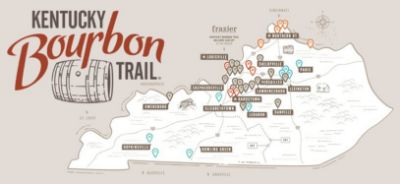The Kentucky Bourbon Trail offers a rich tapestry of experiences that extend far beyond the simple enjoyment of whiskey. Its roots stretch back to the late 1700s when Kentucky’s fertile soil and unique climate fostered the growth of the bourbon industry. Today, the trail is a celebration of this heritage, attracting hundreds of thousands of visitors annually.
Origins and Development of Bourbon in Kentucky Kentucky's rise as the bourbon capital is deeply intertwined with its geography and history. The state's wide temperature fluctuations, characterized by cold winters and hot summers, are ideal for aging bourbon. This climate causes the charred oak barrels, a defining feature of bourbon production, to absorb and release the whiskey, giving it its distinctive taste and amber color. The fertile Kentucky soil, perfect for growing corn, also played a crucial role. Settlers, drawn by land incentives, found that corn thrived in the region. Distillers migrating from the East Coast adapted their whiskey recipes, replacing rye with corn, which was more abundant in Kentucky.
The distinctive style of corn-based whiskey emerged in Kentucky by the 1780s. The American Revolution's aftermath also contributed to the popularity of whiskey. As rum imports decreased, whiskey consumption soared, and Kentucky's whiskey industry flourished. Kentucky took advantage of its navigable waterways for transport and strong family traditions in distilling, passing down knowledge and skills through generations. These factors collectively nurtured the bourbon industry, allowing it to withstand economic challenges.
The Kentucky Bourbon Trail Initiated in 1999 to boost tourism, the Kentucky Bourbon Trail is a collection of bourbon whiskey distilleries across Kentucky. As of 2023, it includes eighteen distilleries, each a member of the Kentucky Distillers’ Association. These distilleries, located primarily between Louisville and Lexington, offer a unique experience to visitors. Some notable names include Bulleit Distilling Company, Maker’s Mark, Jim Beam, and Woodford Reserve.
Visitors can obtain a Kentucky Bourbon Trail Passport at their first distillery, collecting stamps from each location. Completing the passport earns a tasting glass, a memento of the journey. The tours, typically lasting an hour, end with tastings. However, not every visit needs to include a tour; many distilleries offer tastings and insights into their history and unique qualities without a full tour. The trail encompasses more than just whiskey tasting; it's an immersive experience into Kentucky's history, culture, and scenic beauty.
The Name "Bourbon" The term "bourbon" for this distinct whiskey began appearing in Kentucky newspaper advertisements by the 1820s. Its origins are debated, with some historians suggesting it originated from Bourbon County, Kentucky, and others positing its association with Bourbon Street in New Orleans. Despite these uncertainties, one thing remains clear: Kentucky bourbon holds a special place in the whiskey world.
In essence, the Kentucky Bourbon Trail is not just a journey through distilleries but a voyage into American history, culture, and the art of whiskey-making. It represents a legacy of craftsmanship and tradition, making it a must-visit for enthusiasts and history buffs alike.


